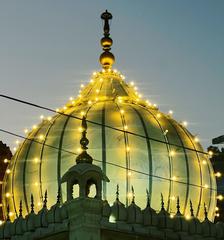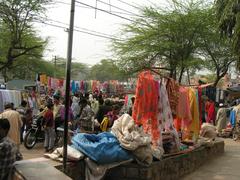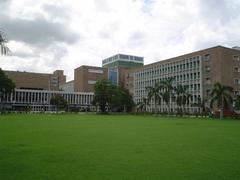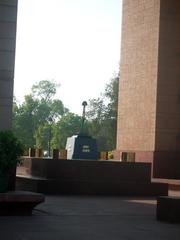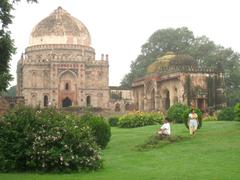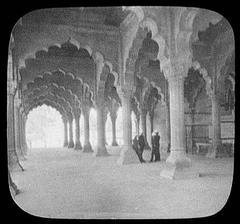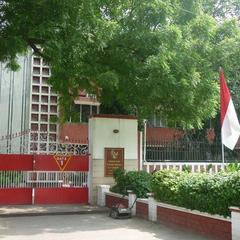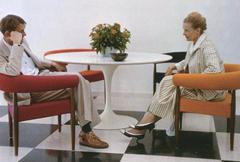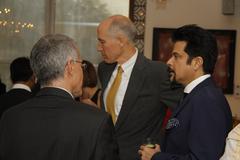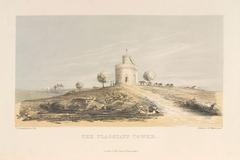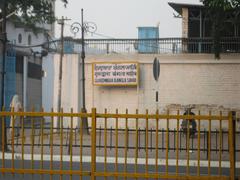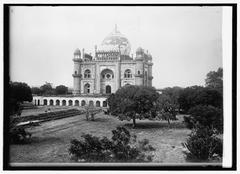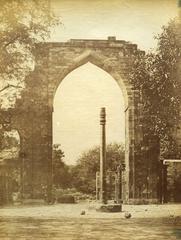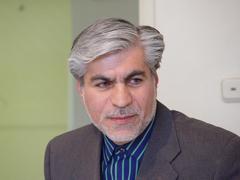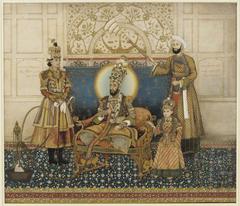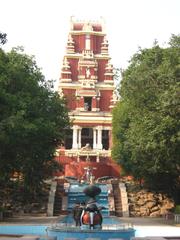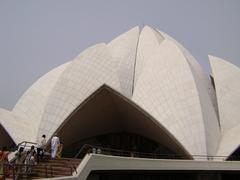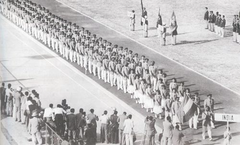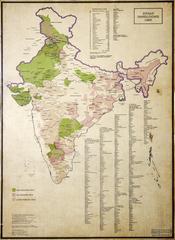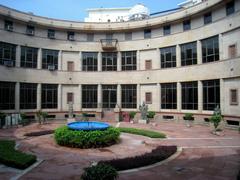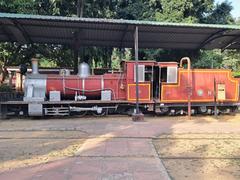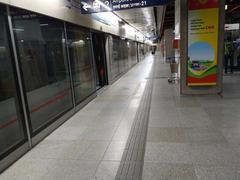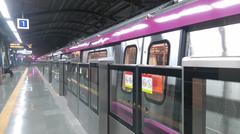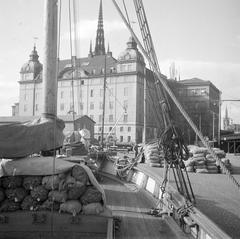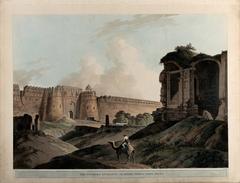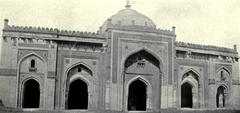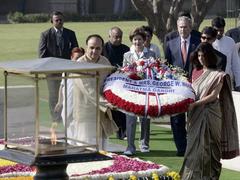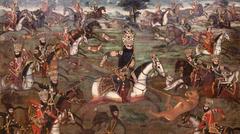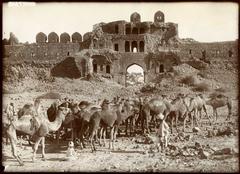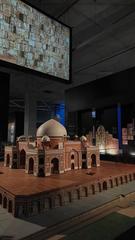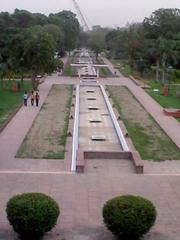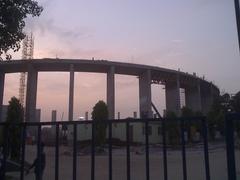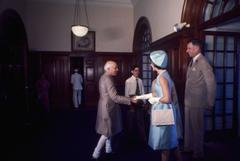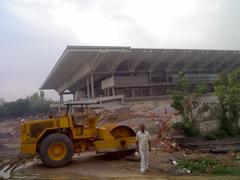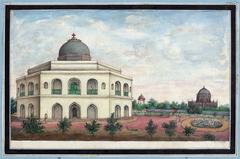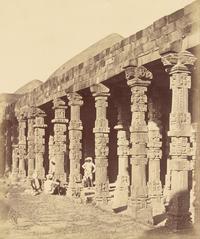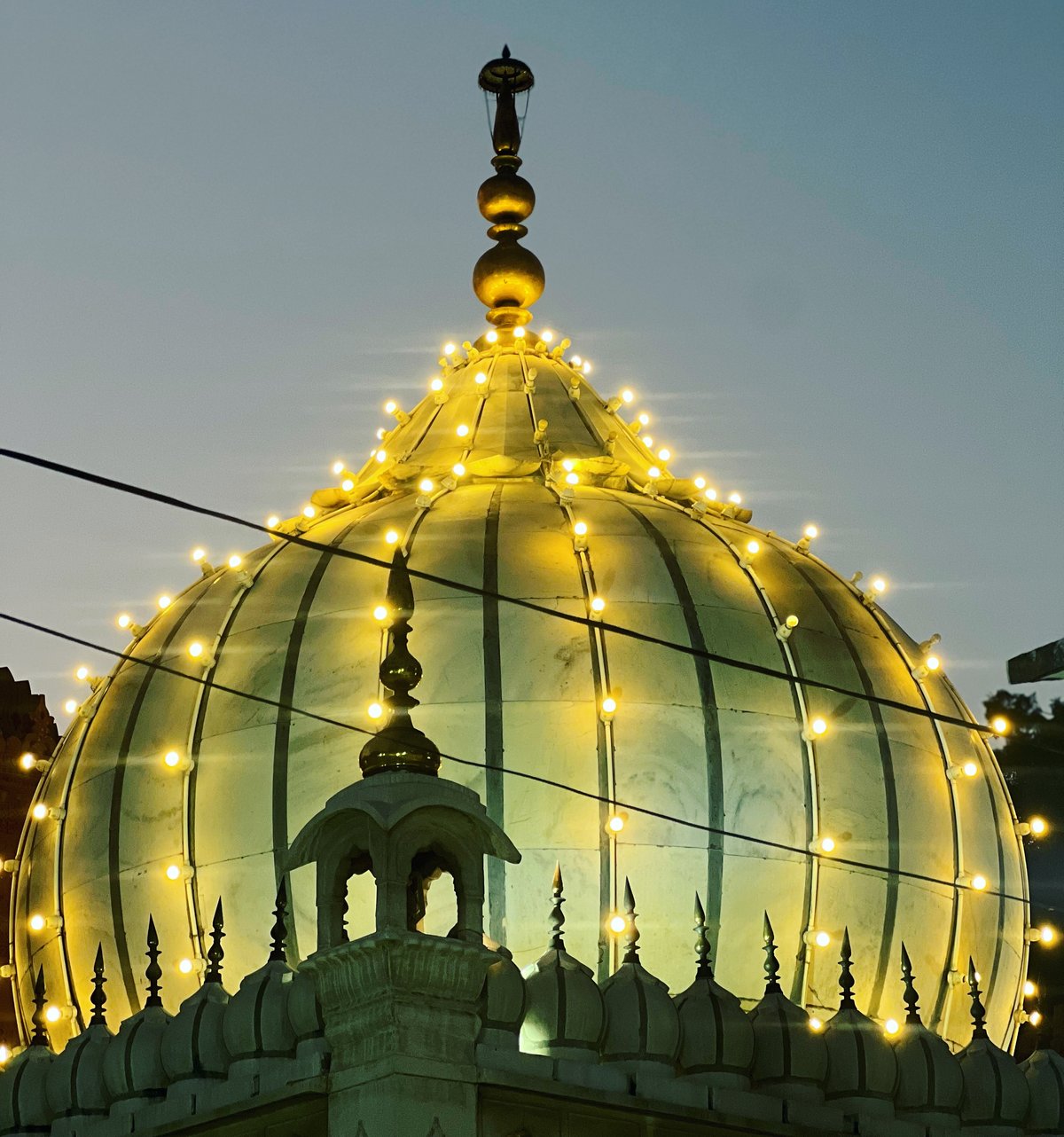
Visiting Jamaat Khana Masjid: Hours, Tickets, and Tips
Date: 17/07/2024
Introduction
Discover the Jamaat Khana Masjid, a stunning 14th-century monument located in New Delhi, India. This mosque, commissioned by Khizr Khan, son of Sultan Alauddin Khalji, around 1325 CE, stands as one of the earliest examples of Indo-Islamic architecture in the Indian subcontinent (Archnet). Nestled within the historic Nizamuddin Dargah complex, the mosque is renowned for its exquisite red sandstone construction, intricate carvings, and rich cultural significance. Serving as a focal point for Sufi worship and community gatherings, the Jamaat Khana Masjid is a testament to Delhi’s diverse religious heritage and architectural prowess. This comprehensive guide covers its historical background, visiting hours, ticket information, and travel tips, ensuring a respectful and enriching visit to this remarkable site.
Table of Contents
History of Jamaat Khana Masjid
Foundation and Early Years
The Jamaat Khana Masjid, located within the historic precincts of the Nizamuddin Dargah in New Delhi, India, is a significant monument that dates back to the 14th century. It was commissioned by Khizr Khan, the son of Sultan Alauddin Khalji, around 1325 CE. This mosque is one of the earliest examples of Indo-Islamic architecture in India, reflecting the synthesis of local and Persian architectural styles. The mosque was built during the Tughlaq dynasty, a period marked by significant architectural advancements and the establishment of many Islamic structures in the Indian subcontinent (Archnet).
Architectural Significance
The Jamaat Khana Masjid is renowned for its unique architectural features. The mosque is constructed primarily of red sandstone, a material commonly used in the region during that era. The structure is characterized by its three domes, each adorned with intricate carvings and calligraphy. The central dome is the largest, flanked by two smaller domes, creating a balanced and symmetrical appearance. The mosque’s facade is decorated with arched niches and geometric patterns, showcasing the skilled craftsmanship of the period (Archaeological Survey of India).
Role in the Nizamuddin Dargah Complex
The Jamaat Khana Masjid holds a prominent place within the Nizamuddin Dargah complex, a major pilgrimage site for followers of Sufism. The mosque was built adjacent to the tomb of Hazrat Nizamuddin Auliya, one of the most revered Sufi saints in India. The proximity of the mosque to the saint’s tomb underscores its spiritual significance. It served as a place for communal prayers and gatherings, fostering a sense of community among the devotees who visit the dargah (Nizamuddin Dargah).
Historical Events and Renovations
Over the centuries, the Jamaat Khana Masjid has witnessed numerous historical events and undergone several renovations. During the Mughal era, the mosque continued to be an important religious site. Emperor Akbar, known for his interest in Sufism, is believed to have visited the mosque and the dargah complex. In the 19th century, the mosque underwent significant restoration work under the patronage of Nawab Bahadur Jang, a nobleman of the Mughal court. These renovations helped preserve the mosque’s architectural integrity and historical significance (Delhi Tourism).
Cultural and Religious Importance
The Jamaat Khana Masjid is not only an architectural marvel but also a symbol of the rich cultural and religious heritage of Delhi. It has been a center for Islamic learning and spiritual discourse for centuries. The mosque’s association with Hazrat Nizamuddin Auliya has made it a focal point for Sufi practices and traditions. The annual Urs festival, commemorating the death anniversary of the saint, attracts thousands of devotees to the mosque and the dargah complex. This event is marked by qawwali performances, prayers, and communal feasts, reflecting the enduring cultural significance of the mosque (Cultural India).
Preservation Efforts
In recent years, efforts have been made to preserve and restore the Jamaat Khana Masjid as part of broader initiatives to protect Delhi’s historical monuments. The Archaeological Survey of India (ASI) has undertaken several conservation projects to address structural issues and prevent further deterioration. These efforts include cleaning and repairing the mosque’s stonework, restoring the intricate carvings, and ensuring the stability of the domes. The preservation of the Jamaat Khana Masjid is crucial for maintaining the historical and cultural fabric of the Nizamuddin Dargah complex (ASI).
Visitor Experience
Visiting Hours
The Jamaat Khana Masjid is open to visitors from 6 AM to 7 PM daily. It is advisable to visit during the early morning or late afternoon to avoid crowds.
Ticket Information
Entry to the Jamaat Khana Masjid is free. However, donations for the upkeep of the mosque are appreciated.
Travel Tips
Dress Code
Visitors are encouraged to dress modestly. Men and women should wear clothing that covers their shoulders, arms, and legs. Women are advised to cover their heads with a scarf. Footwear must be removed before entering the mosque, so it is advisable to wear easily removable shoes.
Best Time to Visit
The Jamaat Khana Masjid is best visited during the cooler months from October to March. The pleasant weather during this period makes it ideal for exploring the mosque and its surroundings. Avoid visiting during the peak summer months (April to June) when temperatures can soar above 40°C (104°F).
Photography
Photography is generally allowed in the mosque, but it is always best to ask for permission before taking pictures, especially of people. Be mindful of the worshippers and avoid using flash photography, which can be disruptive.
FAQ
What are the visiting hours for Jamaat Khana Masjid?
The mosque is open from 6 AM to 7 PM daily.
How much are the tickets for Jamaat Khana Masjid?
Entry to the Jamaat Khana Masjid is free, but donations are appreciated.
Is the mosque wheelchair accessible?
The pathways within the Nizamuddin Dargah complex can be narrow and crowded, making it challenging for wheelchair users. It is advisable to visit during less crowded times for a more comfortable experience.
Are guided tours available?
Yes, local guides are available at the entrance and their fees are usually negotiable.
Conclusion
In summary, the Jamaat Khana Masjid stands as a testament to the rich cultural and architectural heritage of Delhi. Its historical significance, coupled with its spiritual importance, makes it a must-visit destination for those interested in exploring the diverse history of India. The ongoing preservation efforts ensure that this architectural gem continues to inspire and educate future generations about the legacy of Indo-Islamic architecture and Sufi traditions. For more updates and related posts, follow us on social media or download our mobile app Audiala.
